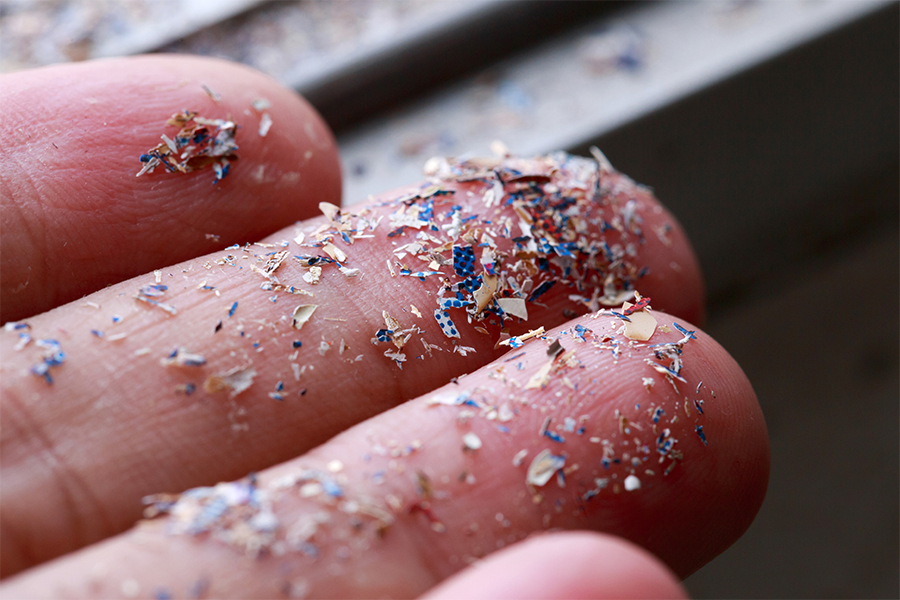
A study on microplastics published last week shows that levels of plastic particles were about 50% higher in brain samples from 2024 compared to 2016.
Research into the health effects of microplastics and nanoplastics is still emerging as the body of work is less than a decade old. Higher concentrations of plastics in our environment are linked to their larger presence in humans.
Florida State University Associate Professor Gregg Stanwood is a developmental neuropharmacologist and behavioral neuroscientist in the College of Medicine. He said the microplastics study raises key questions about the effect of plastics on our health, but cautions more research is needed to better understand the consequences.
“Initial indications from research studies in people, as well as model organisms like isolated cells, zebrafish and rodents, suggest that microplastic exposures contribute to increased risk of serious health conditions, including neurodegenerative diseases,” said Stanwood. “It’s too soon to quantify the exact degree of those increased risks.”
Civil & Environmental Engineering Assistant Professor Jeffrey Farner has expertise in microplastics and nanoplastics, and is focused on their detection, prevalence and exposure. He explains that their omnipresence in today’s environment is due to two factors.
“The first is that global plastic production continues to increase. Approximately 400 million tons of plastics are produced annually, and this number has increased year on year,” Farner said. “The second reason is that plastic use leads to release into the environment both intentionally and due to mismanagement or poor waste streams.”
Media with questions on the health-related concepts of the microplastics study can contact Stanwood at gregg.stanwood@med.fsu.edu.
Farner is available to answer questions on the environmental impact of microplastics and can be contacted at jfarner@eng.famu.fsu.edu.
Gregg Stanwood, Associate Professor, FSU College of Medicine
Should consumers exercise any caution when it comes to using plastic materials?
“Unfortunately, microplastics and other pollutants are fairly pervasive in our environment. Nevertheless, there are some actions consumers can take to reduce their exposure, including avoiding single-use plastics like cups, eating utensils and straws. Re-usable ones are better. People should also avoid microwaving food in plastic containers and avoid foods with excessive plastic packaging. Support the continuation and expansion of large well-controlled studies at the national level to allow these innovative researchers to continue this important work.”
Jeffrey Farner, Assistant Professor, FAMU-FSU College of Engineering
The study makes it clear that microplastic levels continue to rise. How have microplastics become so prevalent?
“We produce more plastic. and we don’t have a closed loop. A key aspect is that microplastics exist either as intentionally produced or as a result of weathering or breakdown of larger plastics. Relatively few microplastics are intentionally produced. But, while a plastic bottle or bag is not intentionally produced to be a microplastic, if that plastic is littered or left out in the environment, it’s going to become brittle and break down, releasing microplastics.
“These microplastics will themselves break down into smaller microplastics and nanoplastics with time and exposure to UV light, heat and other stresses. Plastic doesn’t degrade in the environment and cease to be plastic; it breaks down into microplastics and nanoplastics. Which means one individual piece of plastic – be it a bag, a bottle, packaging, construction material, plastic landscape fabric, etc., can become millions or billions of tiny particles that are then carried by the wind, dispersed in water, or get mixed into our soils.”
While much more data remains to be seen, what do we know right now about human exposure to microplastics?
“Human exposure comes from an incredibly wide variety of sources, but they all basically come down to what we breathe and what we ingest. Our skin is generally quite good at keeping particles out of the body. Airborne microplastics and nanoplastics exist as small particles and fibers that then are either inhaled, or deposited onto food or into liquids and are ingested. Inhaled microplastics can enter the lungs, and smaller particles are more apt to travel deeper into the lungs and alveoli. For ingested particles, estimates have suggested that we may consume the equivalent of a credit card (approximately 5 grams) a week. These come from plastics found in the food and drinks we consume as well as deposited airborne particles.”




